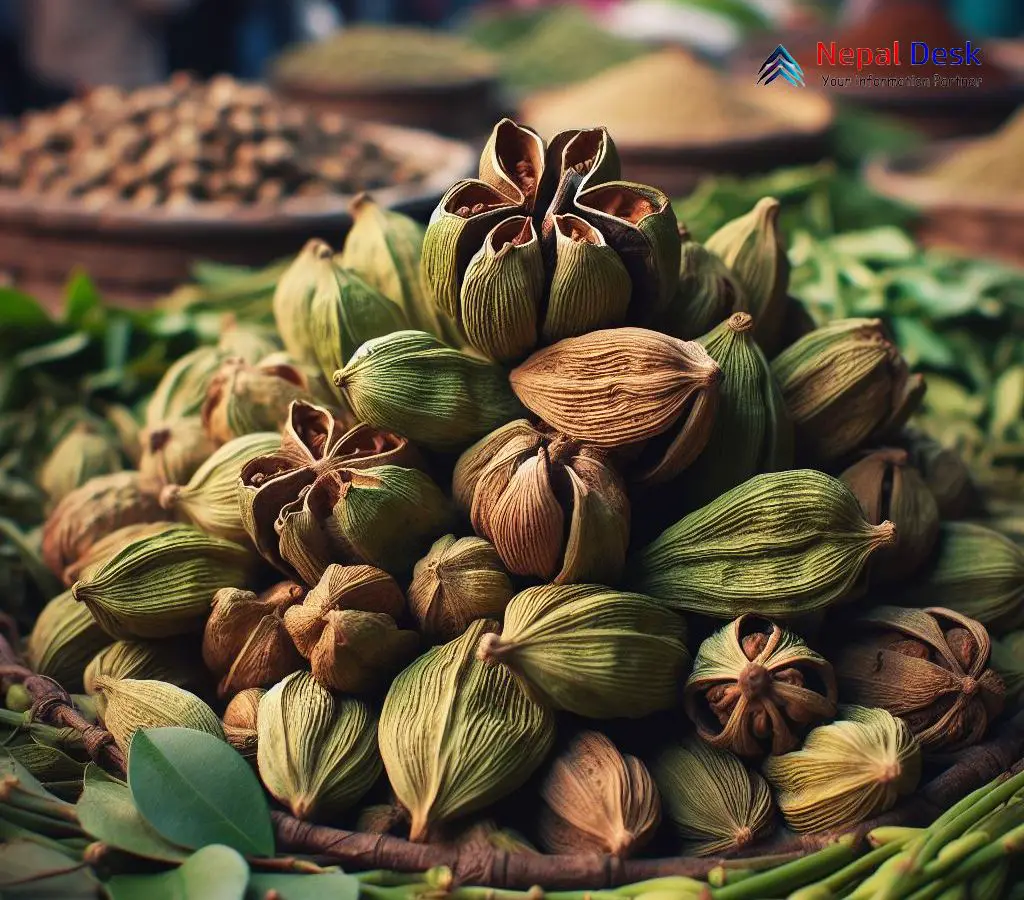Lamjung's Large Cardamom Boom: Record Earnings for Farmers
Published Date

Published Date
Lamjung's booming large cardamom industry: Farmers earned 240 million rupees in FY 2080-81. Explore growth zones and strains for sustainable farming.
⏱ 2 min read
Lamjung district, a growing center for large cardamom farming in Nepal, has seen its farmers earn 240 million rupees from the sale of large cardamom seeds this year. As reported by the Prime Minister Agriculture Modernization Project (PMAMP) Implementation Unit in Lamjung, this income was generated from 251 metric tons of large cardamom seeds produced during fiscal year 2080/81.
Hari Bahadur Mijar, an agriculture officer at the Implementation Unit, stated that since 2004 BS, there has been an expansion of large cardamom farming in the district. This year, the going rate for selling large cardamom was 1200 rupees per kilo.
In the previous year, revenue from a 380-metric-ton sale reached 200 million rupees. The prices ranged from a minimum of 550 to a maximum of 700 rupees per kilo during fiscal year 2079/80. Despite a drop in production this year, increased prices have led to record earnings for local farmers.
In fiscal years past, such as 2078/79 and before, revenues generated from seed sales ranged between 130 million and 150 million rupees. Prices per kilo fluctuated between 950 and 1050 rupees during some of these periods.
Also Read:
Large Cardamom Crisis in Nepal: Challenges, Recovery and Future
Most farmers sold their large cardamom seeds at a rate of 1200 rupees per kilo; however, a few managed to sell at a slightly higher price of 1350 rupees per kilo. Albeit a decrease in production across the district this year, there was once a time when seeds fetched up to 2200 rupees per kilo. Although consistently high demand exists for Lamjung's large cardamom seeds, farmers have expressed their dissatisfaction with unideal pricing due to India's market monopoly. Fortunately, this year's price increase has offered some relief and happiness to the farming community.
Despite over 1000 hectares of land dedicated to large cardamom farming in Lamjung, only 500 hectares contributed to production based on current reports. The Project has identified Marsyangdi Rural Municipality, Beni Saihar Municipality, Kwhlosothar Rural Municipality, Dordi Rural Municipality, and Dudhpokhari Rural Municipality as large cardamom core zones with the highest yields within the district.
Various strains of large cardamom saplings - including Saunne, Jirmale, and Dambarsahi - were cultivated at different elevation ranges within the district. Agriculture Officer Hari Bahadur Mijar cites reasons for the annual reduction in production as farmers removing leaves from older plants for replanting purposes, weak former plantations, and insufficient care.
